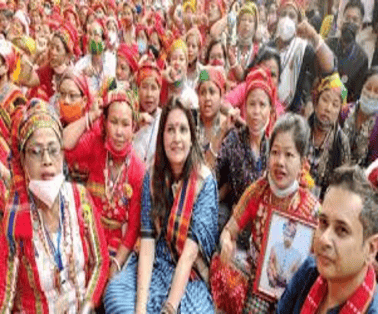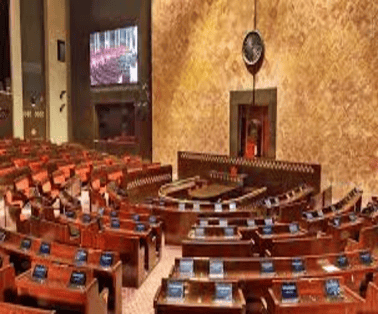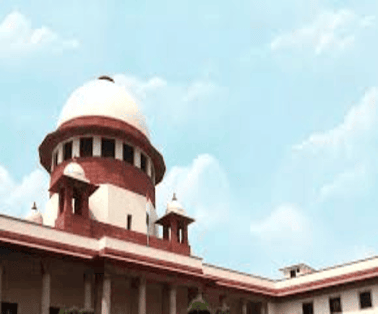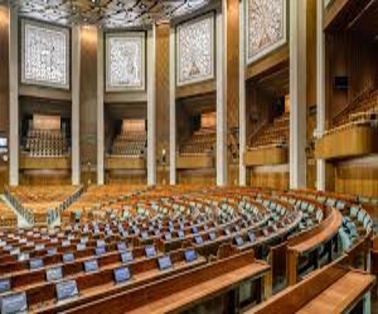A tripartite agreement between TIPRA Motha and the governments of Tripura and India was signed to bring a lasting solution to the issues faced by the state’s indigenous people. This agreement marks a pivotal moment in Tripura’s history, addressing critical concerns related to the rights, culture, and future of the indigenous communities in the region.
Key Points of the Tripura Agreement
- Signed on March 2, the agreement comes just ahead of the Lok Sabha elections, and has put an end to the indefinite fast-unto-death started by TIPRA Motha founder and royal scion Pradyot Kishore Manikya Debbarma on February 27.
- The pact seeks to resolve all issues faced by Tripura’s indigenous people regarding history, land and political rights, economic development, identity, culture and language.
- This pact is eleventh in the series of agreements signed in the current term of the govt to make North-East region free of insurgency, violence and disputes.
- The pact has also facilitated the TIPRA Motha’s joining the BJPin the state government, with two of its members sworn in as ministers.
What Are the Demands of TIPRA Motha in Tripura?
- The Tipra Motha’s demands include a “Greater Tipraland” — a separate state for Tripura’s tribals which seeks to include those living outside the Tripura Tribal Areas Autonomous District Council (TTAADC) area as well.
- The party has sought more powers for the TTAADC, including direct funding from the Centre, its own police force, and share of revenue from gas exploration in the state.
- It also wants the Roman script to be declared as the official script for the indigenous Kokborok language.
What Does the Tripura Accord Say?
- Under the pact, it was agreed to amicably resolve all issues of indigenous people of Tripura relating to history, land and political rights, economic development, identity, culture and language.
- Along with this, it was agreed to constitute a joint working group/ committee to work out and implement the mutually agreed points on all the above mentioned issues in a time-bound manner to ensure an honourable solution
- In order to maintain a conducive atmosphere for implementation of the pact, all stakeholders shall refrain from resorting to any form of protest/ agitation, starting from the day of signing of the agreement
Greater Tipraland: A Separate State for Tripura’s Indigenous Communities
- The parties are demanding a separate state of ‘Greater Tipraland’ for the indigenous communities of the north-eastern state.
- They want the Centre to carve out the separate state under Article 2 and 3 of the Constitution.
- Article 2 of the constitution says that “The Parliament shall permit the establishment of new states and union territories and also permit the entry of new states and UTs into the Indian Union”.
- Article 3 says that “Parliament shall increase or diminish the area of a state”.
- The demand seeks to include every tribal person living in indigenous area or village outside the Tripura Tribal Areas Autonomous District Council (TTAADC) under the proposed model.
- However, the idea doesn’t restrict to simply the Tripura tribal council areas.
- It extends to include ‘Tiprasa’ of Tripuris spread across different states of India like Assam, Mizoram etc.
- It also includes those living in Bandarban, Chittagong, Khagrachari and other bordering areas of neighbouring Bangladesh.
Why Did This Issue Arise in Tripura?
- The demand mainly stems from the anxiety of the indigenous communities in connection with the change in the demographics of the state, which has reduced them to a minority.
- It happened due to the displacement of Bengalis from the erstwhile East Pakistan between 1947 and 1971.
- From 63.77 per cent in 1881, the population of the tribals in Tripura was down to 31.80 per cent by 2011.
- In the intervening decades, ethnic conflict and insurgency gripped the state, which shares a nearly 860-km long boundary with Bangladesh.
- The joint forum has also pointed out that the indigenous people have not only been reduced to a minority but have also been dislodged from land reserved for them by the penultimate king of the Manikya dynasty Bir Bikram Kishore Debbarman.
The Historical Background of Tripura
- The former princely state of Tripura was ruled by Maharajas of Manikya dynasty.
- It was an independent administrative unit under the Maharaja even during the British rule in India, though this independence was qualified, being subject to the recognition of the British, as the paramount power of each successive ruler.
- As per Rajmala, the royal chronology of Tripura, a total of 184 kings ruled over the state before it merged with the Indian Union on October 15, 1949.
- Since then, the history of Tripura has been interspersed with various political, economical and social developments.
- On January 26, 1950, Tripura was accorded the status of a ‘C’ category state and on November 1, 1956, it was recognized as a Union Territory.
- With the sustained efforts and struggle of the people of Tripura, it gained full statehood on January 21, 1972, as per the North-East Reorganisation Act, 1971.
- And democratic set-up got further stretched upto the village level in 1978 with election to the local bodies that ultimately culminated in the introduction of three-tier Panchayati Raj
Tripura Tribal Areas Autonomous District Council
- For socio-economic development, preservation of language and culture of Tripura Tribal Areas, Autonomous District Council (ADC) was constituted in 1982 under the 7th Schedule of the Constitution and later on in 1985 it was brought under the 6th Schedule.
- The council comprises 30 members of which 28 are elected while two are nominated by the Governor.
- Also, out of the 60 Assembly seats in the state, 20 are reserved for Scheduled Tribes.
Understanding the Sixth Schedule of the Indian Constitution
- The Sixth Schedule of the Constitution deals with the administration of the tribal areas in the four northeastern states of Assam, Meghalaya, Tripura and Mizoram as per Article 244.
- The Governor is empowered to increase or decrease the areas or change the names of the autonomous districts.
- While executive powers of the Union extend in Scheduled areas with respect to their administration in Vth schedule, the VIth schedule areas remain within executive authority of the state.
- The acts of Parliament or the state legislature do not apply to autonomous districts and autonomous regions or apply with specified modifications and exceptions.
- The Councils have also been endowed with wide civil and criminal judicial powers, for example establishing village courts etc. However, the jurisdiction of these councils is subject to the jurisdiction of the concerned High Court.
- The sixth schedule to the Constitution includes 10 autonomous district councils in 4 states. These are:
- Assam: Bodoland Territorial Council, Karbi Anglong Autonomous Council and Dima Hasao Autonomous District Council.
- Meghalaya: Garo Hills Autonomous District Council, Jaintia Hills Autonomous District Council and Khasi Hills Autonomous District Council.
- Tripura: Tripura Tribal Areas Autonomous District Council.
- Mizoram: Chakma Autonomous District Council, Lai Autonomous District Council, Mara Autonomous District Council.
To Download Monthly Current Affairs PDF Click here
Click here to get a free demo
Discover all about CLAT Exam



